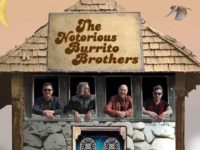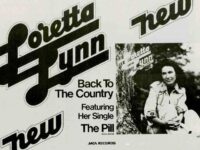The music is called country-rock, but I fail to hear the rock on most of Gram Parson’s classic Grievous Angel. To me, he was a country star with a rock attitude – Keith Richards and the Rolling Stones were his good friends – and that is why he appealed to the Woodstock generation.
Grievous Angel was only Parsons’ second solo album after a very brief but artistically productive stint as a member of the Byrds and later with his own Flying Burrito Brothers. He was outwardly suffering from heroin and alcohol addiction throughout the sessions in the summer of 1973, and ultimately overdosed in a Joshua Tree, Calif., motel at only age 26 – just a little too young to qualify for the infamous 27 Club.
Still, critics considered Grievous Angel an artistic triumph even though it never climbed higher than No. 195 on Billboard’s album chart. The LP prominently featured Emmylou Harris on vocals and Parsons wanted to treat her almost as an equal by crediting the album to “Gram Parsons with Emmylou Harris,” because she sang on eight of its nine songs.
The album wasn’t released until January 1974 – several months after Parson’s passing – and because his widow resented the close working relationship that Harris had with her husband, she had the future country legend’s name and picture removed from the front cover before its release. Harris only appears as a band member along with the other musicians who played on Grievous Angel.
Parsons’ voice is a perfect fit for the kind of music he loved, and Harris is a flawless duet partner. They excel on the album opener “The Return of the Grievous Angel” and on their classic cover of Roy Orbison’s “Love Hurts.” Parsons never let his ego get in the way of making good music, regardless of who received the writing credit.
In addition to the Orbison tune, he covered Tom T. Hall’s “I Can’t Dance,” the Louvin Brothers’ “Cash on the Barrelhead” and Walter Egan’s “Hearts on Fire.” “Barrelhead” is paired with Parson’s own “Hickory Wind” and is actually a studio recording, but it’s presented here as a faux barroom performance that makes listeners believe they’re hearing a live show in a seedy dive bar.
There is plenty of country music pickin’ from James Burton on electric lead guitar, Herb Pederson on rhythm, and Al Perkins on pedal steel. Bernie Leadon played dobro, and Byron Berline added some fiddle and mandolin. Linda Ronstadt contributed gorgeous harmonies to the sad and most beautiful song on the record, “In My Hour of Darkness” – a co-write with Harris that closes the album.
Over the decades, a cult has arisen surrounding the death of the man many people say gave birth to country-rock.
Parsons didn’t want a fancy funeral so he and his road manager, Phil Kaufman, made a pact to cremate each other’s body in the desert if either of them died young. To make it happen, Kaufman and a friend had to steal Parsons’ corpse from Los Angeles International Airport in a ramshackle hearse with help from an unsuspecting police officer. They took the purloined musician’s remains to Cap Rock in his beloved Joshua Tree National Park, poured gasoline over Gram Parsons’ body and, set it ablaze.
In 2019, my wife and I stopped at Cap Rock specifically to look for any tributes left by fans who visited the site. The National Park Service regularly removes them, but new homemade monuments continue to pop up. The only one we saw during our visit there was this blue cross painted on the rock with the initials “GP” scrawled underneath it. We snapped a picture for posterity because we knew it was eventually going to be removed.
Parsons’ outrageous funeral story has become legendary, and because popular music is a very generational thing it’s possible this strange but true tale of his passing may unfortunately outlive his artistic endeavors.
- How Billy Joel’s ‘Turn the Lights Back On’ Recalls Past Glories - March 22, 2024
- ‘George Harrison: The Reluctant Beatle’ by Philip Norman (2023): Books - January 10, 2024
- Yes, ‘Now and Then’ Is an Actual Beatles Song - November 6, 2023




